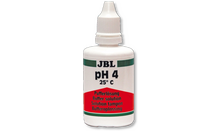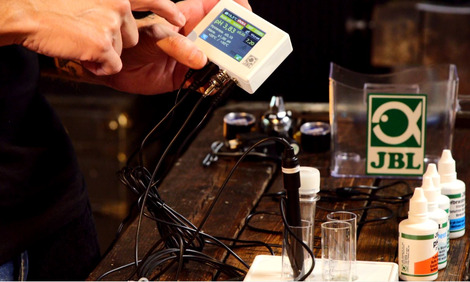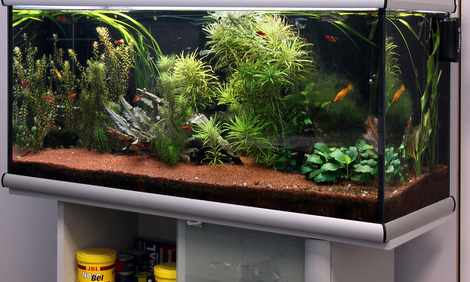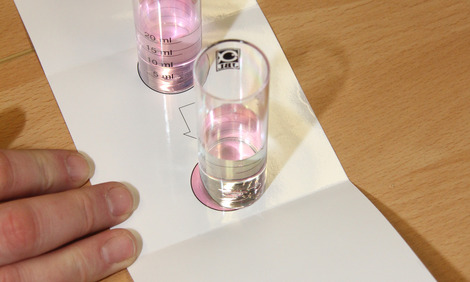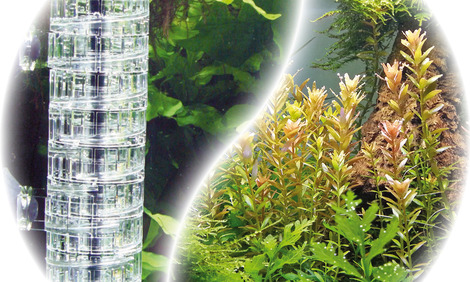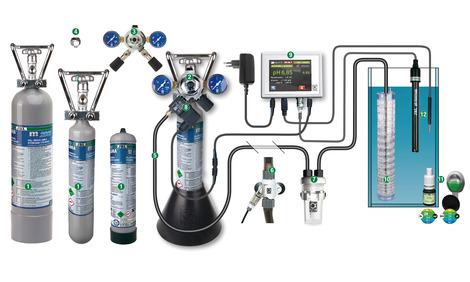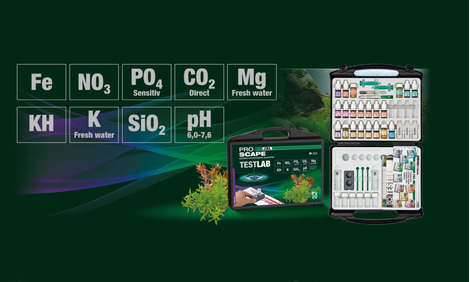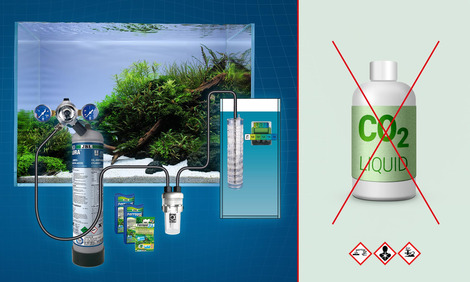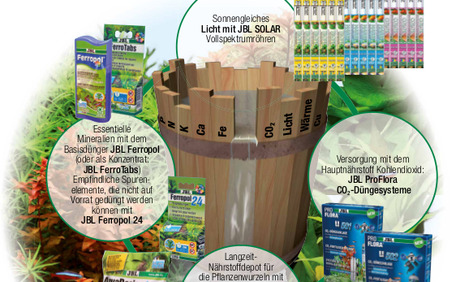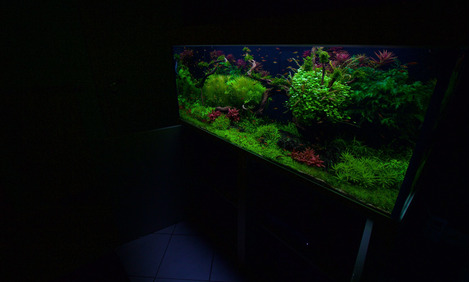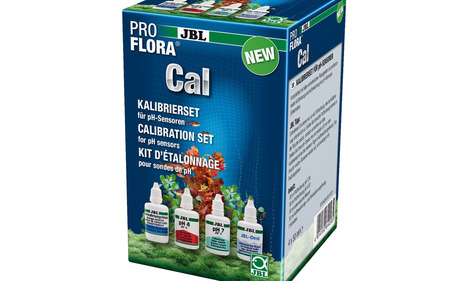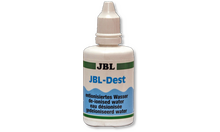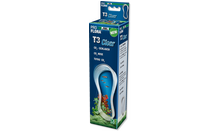Healthy fish thanks to an ideal pH value
The acidity defines the pH value of the water. It needs to be constantly checked and adjusted as necessary to maintain the health of the fish and plants. The correct pH value depends on the fish stock of the aquarium. The wrong pH value can cause stress and disease.
Easy to connect
Connect the pH electrode with the BNC connection to its respective measuring and control device. - RELIABLE –
The electrode has been individually tested and documented and needs to be replaced after about 2 years. It comes with a large protective cap, filled with storage solution.
pH electrodes:
Every pH control or measuring device and also the JBL pH-CO2 control device (JBL PROFLORA pH-Control Touch) requires a pH electrode (JBL PROFLORA pH-Sensor+Cal) to measure the pH value of the water. pH electrodes age with time and must be replaced about every 2 years. Every 30-45 days the pH electrode needs to be calibrated so that it continues to show accurate values. During calibration, the functionality of the electrode is also checked so that you know when a new electrode is needed. The pH electrodes do not like the addition of medication in the water and should be placed in a glass of aquarium water during treatments. pH electrodes should not be stored in distilled water but in a potassium chloride solution (KCl, a JBL storage solution).
JBL PROFLORA pH-Sensor+Cal
pH electrode with BNC connection
PROFLORA CO2 pH SENSOR SET
- Robust quality electrode for JBL pH-Control and other pH measuring and control devices with a BNC connection, incl. liquid for the calibration and storage of pH sensors
- Easy to connect: connect the electrode with BNC connection to the respective measuring or control device (not included)
- Large protective cap filled with storage solution, plastic shaft and gel filling, suitable for many systems with BNC plug
- Individually tested with dedicated test report.
- Package contents: pH electrode, 2 suction cups for mounting, 3 cuvettes, 50 ml bottles for storage solution, distilled water, calibration liquid pH 7.0 and 4.0
You may also be interested in
JBL PROFLORA pH-Sensor+Cal
Properties
| Animal species: | Arowana, Axolotl, Barbels, Bettas, Bichirs/reedfish, Blowfish, Catfish, Cichlids (South America), Crayfish, Danions, Discus, Dwarf shrimps, Flowerhorn, Goldfish, Gouramis, Guppy, Juvenile fish, Killifish, Livebearers, Loaches, Mussels, Panchaxes, Rainbowfish, Snails, Spiny eels, Tetra, Veiltails, freshwater butterflyfish |
| Animal size: | For all animal sizes |
| Animal age group: | All aquarium fish |
| Volume habitat: | For all aquariums |
| Material: | plastic / KCl / buffer solutions |
| Colour: | white / transparent / black |
Electronic label / illuminant
| Mercury: | No |
| Dimmable: | No |
Technical Data
No, don't worry. The MIN date on the packaging is not a BBD (best before date), but the date of the latest intial operation to guarantee 6 months warranty and 1 year operation. This information can also be found on the product packaging. Everything is therefore in order.
All pH sensors (electrodes) are wear parts and are subject to natural ageing. JBL grants a 6-month guarantee if the sensor is put into operation before the stated MIN date. The purchase receipt serves as proof.
A BNC connector is needed.
It is difficult to give a precise answer without information about the sensor, particularly the age of the sensor. Good sensors have deviations in the range from 0.02 to 0.05 pH levels when calibrating.
The input voltage differs for each electrode, as each electrode has its own individual properties. For the majority of our electrodes, it is between -30 and +30 mV at pH 7.
Both input voltages (pH 7 and pH 4) are important when assessing the quality of an electrode. The greater the difference between these two values, the better the electrode and the precision of the measurement and control. The differences should be over 140-150 mV.
The temperature sensor should always be used during calibration. The pH level varies according to temperature, so that it is always best to measure the pH level with temperature compensation.
It is difficult to give a precise answer without information about the sensor, particularly the age of the sensor. Good sensors have deviations in the range from 0.02 to 0.05 pH levels when calibrating.
The input voltage differs for each sensor, as each sensor has its own individual properties. For the majority of our sensors, it is between -30 and +30 mV at pH 7.
Both input voltages (pH 7 and pH 4) are important when assessing the quality of a sensor. The greater the difference between these two values, the better the sensor and the precision of the measurement and control. The differences should be over 140-150 mV.
The temperature sensor should always be used during calibration. The pH level varies according to temperature, so that it is always best to measure the pH level with temperature compensation. The deviation is between 20 and 30 °C, 0.17 pH levels, and the relationship is nonlinear.
The message INSTAB indicates: instable sensor voltage: the sensor tip is dirty, the electrolyte has leaked from the sensor, the sensor tip is damaged.
Remedy: Clean the sensor head (see the respective instruction), put the sensor into the storage solution for 24 hours and repeat the calibration. If this does not work the sensor is defective and should be replaced.
The cable has a length of 2m.
The cause can probably be fixed quite easily. The protective cap of the pH sensor needs to be removed before insertion into the aquarium / before the calibration, to carry out control/calibration correctly. The protective cap serves as storage and “reactivation” of the sensor with the storage liquid. It has to be removed for use inside the aquarium and during the calibration because no water from outside can pass through. If the controller still displays an error, even after the removal of the protective cap, please read the FAQ with the several error messages in detail.
The cause can probably be fixed quite easily. The protective cap of the pH sensor needs to be removed before insertion into the aquarium / before the calibration, to carry out control / calibration correctly. The protective cap serves as storage and “reactivation” of the sensor with the storage liquid. It has to be removed for use inside the aquarium and during the calibration because no water from outside can pass through.
If the controller still displays an error, even after the removal of the protective cap, please read the FAQ with the several error messages in detail.
The message OFFSET indicates: The sensor voltage at pH 7.00 is outside the limit value, the sensor is too old, the cable is defective, no sensor is connected or the calibration has been performed with buffer 4 solution.
Remedy: Check the sensor cable for any signs of damage and repeat the calibration. Take care to use the buffer solution correctly. If this does not work, replace the sensor and calibrate again.
If the pH value is subject to greater fluctuation, this is an indication of interference from another electronic device. Ballasts in light bars, for instance, create an electromagnetic field if they are not shielded against interference. This can disturb the sensitive sensor. When you unplug the power plug from the outlet the pH value should suddenly stabilise. You can carry this process out with every electrical device in the aquarium to find the source of interference.
By using separated power-carrying cables further disturbances can be avoided. Separating electrical circuits may also prove to be a good idea. The JBL pH Control Touch units are manufactured and tested in accordance with EMC directives and do not interfere with other technical items. Thus the JBL pH Control Touch does not expose wearers of pacemakers to any danger.
If another technical item disturbs your pH control, then it has not been electromagnetically shielded in accordance with this technical standard.
If the pH value is subject to greater fluctuation, this indicates a source of interference through another electronic device. Ballasts in light bars, for instance, create an electromagnetic field if they are not shielded against interference. This can disturb the sensitive sensor. When you unplug the power plug from the outlet the pH value suddenly stabilises. You can carry this process out with every electrical device in the aquarium to find the cause.
Through the use of separated power-carrying cables further disturbances can be avoided. Separating electrical circuits may also prove to be an advantage. The JBL pH controllers are manufactured and tested in accordance with DIN EN 55014-2 and do not interfere with other technical items. Thus wearers of pacemakers are not exposed to any danger through the JBL pH Control.
Should another technical item disturb your pH control, then it is not electromagnetically shielded according to this technical standard.
If the error still persists try removing the temperature sensor from the controller. If the value now remains stable, the temperature sensor may be defective.
This message indicates that the potential difference per full pH unit is smaller than 30 mV. The pH sensor is either too old, defective or was accidentally calibrated twice with the same buffer solution.
Remedy: Repeat the calibration and take care to use the buffer solution correctly. If this does not work, connect a new sensor and calibrate again.
No, the pH sensor is meant. It is located in a protective cap which is filled with a storage solution. Before the calibration the pH sensor needs to be taken out of this protective cap by loosening the screw connection and to be immersed, without the cap (and storage solution), into the aquarium water.
The pH sensor transmits a voltage to the measuring device, which convert the voltage into the pH value.
This voltage does NOT remain constant throughout the service life of the sensor! It needs to be calibrated regularly. The device is thus informed about the age-related change in voltage and can display reliable values again.
The calibration takes place at pH 7 and pH 4.
At pH 7 a new sensor transmits a voltage of 0 mV (+/- a few mV) to the measuring device. The more the voltage at pH 7 deviates from 0, the older the sensor is. The deviation can occur at + or -. At a deviation of more than +40 or -40 mV the device rejects the sensor.
The error message OFFSET appears.
NOTE: The same error message appears if you accidentally begin to calibrate at 4!!
At pH 4 the sensor transmits a voltage of about +186 mV (when 7 is at 0 mV). This means that between the single steps (4-5; 5-6 and 6-7) there is in each case a difference of about 62 mV. The smaller this difference, the older the sensor. With differences below 30 mV the device rejects the sensor.
The error message DELTAV appears.
NOTE: The same error message also appears, when you accidentally calibrate twice at 7!!
IMPORTANT: Rejected sensors can often be brought “back into operation” if you soak them intensively in storage solutions (for several days)!
In the menu you have the chance to choose the interval before the next calibration reminder. The following calibration intervals are available:
30 days
45 days
60 days
However it is highly recommended not to select the 60 days setting, since each pH sensor wears continuously and the measured values become subject to change. Thus the more often you carry out a calibration the more reliable are the measurement results.
A display of N/A means that the pH controller is not receiving any input value. This may be due to the following:
1) There is no contact in the plug, perhaps caused by a slightly corrosive coating. Please check the contact points of the plug.
2) The temperature sensor is not connected.
Note: The JBL pH Control Touch can also be operated without a temperature sensor. In this case, the controller adjusts to a water temperature of 25 °C.
Yes, it can. The storage solution is also intended for the regeneration of pH electrodes. However, please note the following:
Any regeneration always depends on the state of the electrodes, their age and the water in which they are used.
1) Maintenance: An electrode should never be allowed to dry up or be stored in a dry condition. This damages the membrane so that the flow of ions through the membrane is no longer ensured. An electrode that has dried up or been stored in a dry condition can sometimes be reactivated for several weeks’ use if it is laid in the storage solution for approx. 3 days.
Please note, too, that any guarantee claims no longer apply if the electrodes are stored in a dry condition or sent in dry.
2) pH electrodes age with time i.e. ions escape from the electrode into the environment. The period of aging depends on how they are used.
3) If pH electrodes are used in soft to very soft water, they age faster. In this case, it is advisable to place the electrodes in the storage solution for 1-2 days every 4 weeks or so.
It is a harmless fungus which will disappear on its own after a while.
You need a separate soleniod valve (JBL ProFlora v002 or JBL PROFLORA CO2 VALVE) to control the CO2 supply. A further night switch-off for CO2 systems, controlled by a pH control unit is not needed, as the CO2 supply will not be turned on in the absence of CO2 consumption, or it will happen less frequently when CO2 degassing occurs at the water surface. That is why the control units do not need a timer
Reviews
0 Reviews
4 more reviews in other languages
4 Reviews in other languages
Cette sonde est vraiment très fiable et solide vous pouvez l'acheter les yeux fermés.
Anschließen, einrichten, genießen :-)
Anfangs hatte ich etwas Respekt vor der Technik.
Das es so leicht wird hätte ich nicht gedacht.
Der PH Controller hat mir Schritt für Schritt erklärt was zutun ist.
Danke für diese tolle Lösung
Mowie NIE Azjatyckim podróbką i wadliwym elektrodą. Przet to mozna sie nabawic duzo problemow w akwarium.Ten sprzęt działa naprawdę bez zarzutu. Wybieram JBL PROFLORA pH-Sensor+Cal.
Ganz wichtig für Co2 Düngeanlagen mit pH Controller. Nicht vergessen :) Muss irgendwann mal gewechselt werden ist nichts für immer kommt aber glaube auch drauf an wie man damit umgeht.






